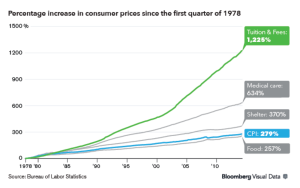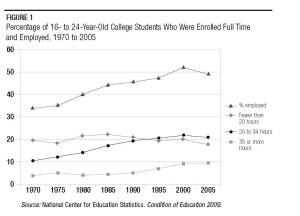Finished reading: Small Teaching: Everyday Lessons From the Science of Learning by James M. Lang (2016)
This year, I’ve been working as a graduate writing program administrator for the second-year writing program. It’s been a great opportunity for several reasons including supporting the teaching of graduate students and lecturers, participating in various administrative discussions about the role of the program in the larger department and university setting, designing and conducting an assessment of student learning in the course, and as a bonus, providing a structured time schedule so I can focus on writing my dissertation. However, the administrative appointment means I haven’t taught in the traditional sense since Spring 2015, and I’m anxiously awaiting the next time I get to work with a group of students. I miss teaching.
So when I saw social media posts about a new book, James M. Lang’s Small Teaching, I was interested in reading it both as a writing instructor and an administrator. As an instructor, I’m always trying to think of new ways to engage students in classroom content and to enhance their learning. As an administrator, I want to provide instructors with concrete strategies to help them become more effective and confident teachers.
The book develops Lang’s idea of small teaching: “an approach that seeks to spark positive changes in higher education through small but powerful modifications to our course design and teaching practices” (5). A relatively small change, whether it’s a 10 minute class activity or rephrasing a discussion question, can result in big learning. Lang presents a wide range of studies from teaching and learning scholarship that offers insight into how students learn best.
Small Teaching is organized into three major units: Knowledge, Understanding, and Inspiration. These broad units focus on how students learn course material (Knowledge), how students use course material in their thinking (Understanding), and how students think and feel about their learning (Inspiration). The chapters in each unit focus on specific actions that have been shown to improve student learning. “Part I: Knowledge” contains chapters on “Retrieving”, “Predicting”, and “Interleaving”; “Part II: Understanding” focuses on the practices of “Connecting”, “Practicing,” and “Self-Explaining”; and “Part III: Inspiration” includes “Motivating”, “Growing”, and “Expanding”. Each chapter breaks down into the following sections:
- In Theory: summaries of relevant studies and key findings
- Models: descriptions of how the learning/teaching strategy can be implemented in a range of courses
- Principles: the essential idea about why the learning/teaching strategy works
- Quick Small Teaching: brief reminders and tips on how to incorporate the teaching strategy in class
The chapter structure is very effective for returning to the key points. I read the book straight through, thanks to the luxury of spring break, and I enjoyed reading Lang’s relatable personal introductions and examples, which he then connected back to studies on teaching and learning. There’s an extensive amount of information in the theory sections, including recommendations for further reading, which makes it easy to find more sources on a particular practice. But I know in the future I won’t have this same luxury of time, and the principles and quick small teaching sections provide quick refresh that would be useful when lesson planning or grading. Although it is possible to just skim the chapters and focus on the principles and quick small teaching sections, I would encourage readers to spend time on the theory sections. Incorporating the principles and suggestions from the quick small teaching sections into a class can facilitate immediate learning, but understanding why these relatively small strategies work by reading the theoretical section will probably improve teaching and learning in the long-term. Luckily, Lang’s writing is engaging and readable, so the book is entertaining and a relatively quick read. That’s not to say it’s a forgettable read; I know I will be reflecting on the strategies even though I’m not currently teaching, and I will be returning to this book when I do teach again.
As an instructor: From an instructor perspective, Lang’s suggested strategies are easy to incorporate into any course (humanities, STEM, performance, etc.) and can take as much time as you can spare in a class period, a unit, or a semester. I appreciated how the book made me reflect on what I’m asking students to do in my class. As a writing instructor, I tend to focus more on the “Understanding” actions (such as drawing connections, applying readings and experience to discussions or their own writing) and less on the “Knowledge” practices, like information retrieval, that are needed to apply concepts. For example, Lang makes the case for incorporating small, frequent opportunities to practice information retrieval through methods like reading quizzes or short written responses at the beginning or end of class. I almost never give reading quizzes to my students because I’ve previously thought about quizzes as punitive. After reading Lang’s explanation of how quizzes can be beneficial for learning, I see how I could build in short, low-stakes opportunities for students to practice information retrieval and help them learn more effectively and efficiently. Overall, I felt that Lang’s suggestions weren’t anything revolutionary, and that’s why this book is incredibly useful; as someone who has taken an active interest in developing active pedagogies, I’ve encountered most of his classroom strategies before. None of his suggestions are too difficult or too time or energy-consuming for instructors or students in any course. Instead, the most valuable part of Small Teaching was the focus on how these teaching strategies actually impact student learning. I know from teaching experience that asking students to free-write at the beginning of class is a way to facilitate more productive class discussions, but now I can articulate to myself and to my students why this practice is an effective way to help them learn.
As an administrator: Small Teaching has made me consider how my program prepares graduate instructors and lecturers to teach. Although Small Teaching is focused on undergraduate learning, I’d be interested in applying some of the principles to our certification workshop that graduate students must take before teaching in the program. For example, many of the graduate students in the certification workshop do not have extensive exposure to rhetoric and composition scholarship, and some may have only taught for 1 semester before teaching in our program. In the short four-hour session, it’s difficult to achieve Knowledge, Understanding, and Inspiration, so what is the most effective use of our time to help instructors learn about pedagogy, writing studies content, and the course curriculum? I also believe that Small Teaching would be useful beyond the professional development workshop as a way to follow-up on teaching observations. Providing instructors with specific strategies from Small Teaching may help them in the short-term incorporate practices to better enhance student learning and their own confidence as instructors while also considering how they would want to foster student learning in future units or courses.
If you are interested in hearing more about Small Teaching or small teaching, check out James Lang’s articles on the first five minutes of class and the last five minutes in The Chronicle of Higher Education. He was also a recent guest on the podcast Teaching in Higher Ed (episode here).

